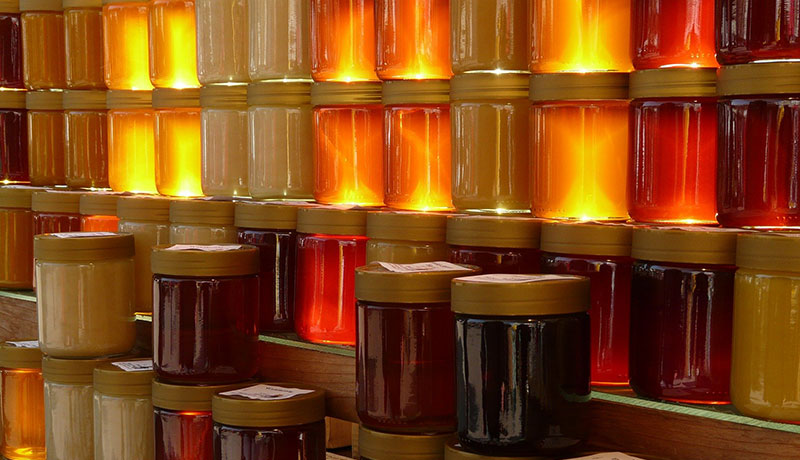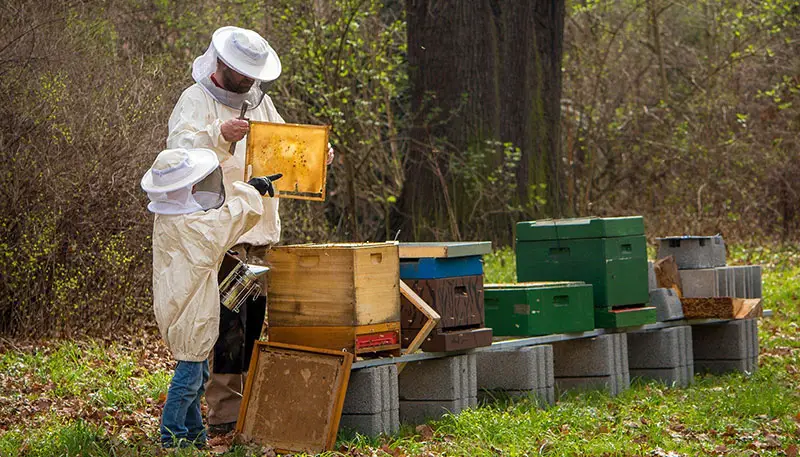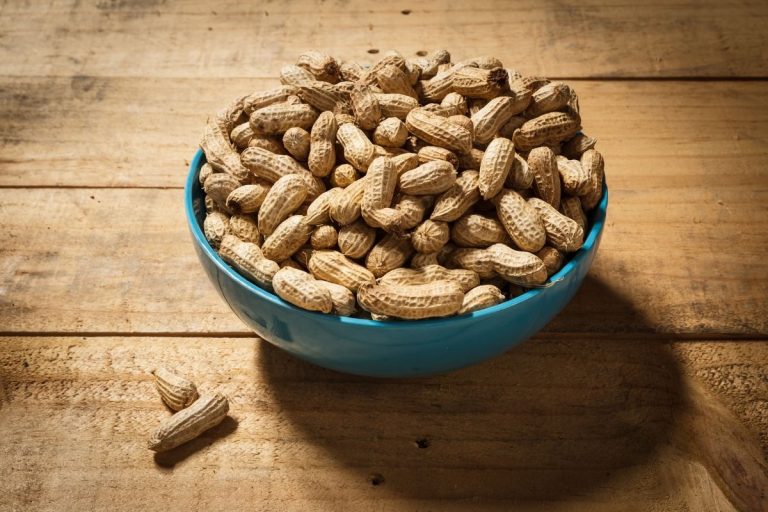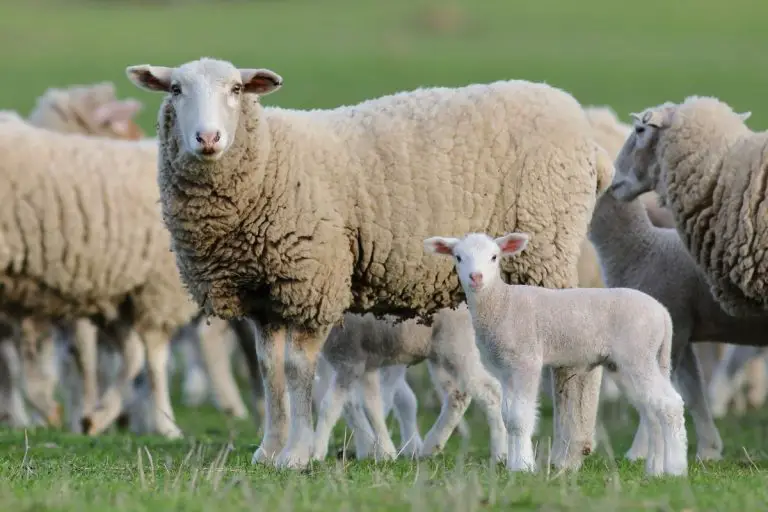What’s the Difference Between Honey and Royal Jelly?
Honey and royal jelly are used a lot on toast for breakfast. However, the difference between the two is small. There are certain elements that are different and that’s what we’re going to look at in this article.
Royal jelly is a natural secretion from the bees to feed the queens, while honey is produced from the nectar they collect and used for food by all bees. Honey and royal jelly have a different color and texture because their composition is not the same.
Do you wish to find out more? This is where you can!
Honey : Bee’s nectar
Honey! You always hear about it!
However, you probably already know what it is, but do you know enough on the subject? If you don’t, you’re in the right place!
Definition
Honey is one of the preferred foods for breakfast in many countries. It’s a substance made by honey bees, from the nectar that they collect. They take it from flowers and then directly leave it in the hive. Also, bees use this nectar for food when the climate is unfavorable for them.

Honey in general is golden and liquid. However, it can crystallize and get harder.
Honey composition
Honey, even though it’s a natural product, has a number of ingredients that should not be overlooked:
- Glucose, but these have different sources: It’s possible to find fructose, glucose and maltose.
- Water
- Protein
- Salt minerals
- Organic acids
- Many vitamins
- Lipids
- Complex organic ingredients like enzymes or even antibiotic factors
- Diverse and varied biological substances
- Pollen grains
As you can see, honey contains a lot of sugar. However, it’s also a very natural product that is good for your health.
Benefits from honey
Honey, even though it’s an ingredient for breakfast, is still food that has a number of benefits. It can be used naturally or in the form of sweets, to soothe sore throats. But it’s important to know that depending on the type of honey the benefits differ :
- Certain honeys have more laxative benefits
- Others allow you to heal injuries, such as inflammation.
Let’s also note that honey can also help with snake bites, which isn’t negligible. And if you’re looking for a natural antioxidant, honey is the perfect ingredient. In fact, it allows you to properly strengthen the immune system, which is very interesting, especially during winter.
Honey preservation
As you probably can imagine, honey is an ingredient that should be preserved in favorable and optimal conditions. In fact, if it isn’t well-preserved, it will not taste nice. If you want to keep your honey, you should leave it in a dark place and sheltered from humidity. We’ll stay away from caves, but a cupboard will do the trick.

Let’s also note that the room temperature has to be optimal : It should be around 25 degrees.
Don’t hesitate to consume it quickly after harvest. A six-month delay is to be respected. If you eat it after the six months, don’t panic, it will still be just as nice. But it will have lost some of its nutrients.
If you notice some crystallization on the honey, don’t worry! It’s perfectly normal. However, you can make it more liquid by leaving it 2 to 3 hours in a heated bath. The water temperature shouldn’t be higher than 40 degrees.
Honey harvesting
Now that we know a bit more on honey and its benefits, we’re going to explain how it’s possible to harvest honey. There’s nothing too complicated. You will need the right tools. In other words, a beekeeper’s outfit is a must so that you can harvest the honey safely.

Afterwards, you need to take out the different honeycomb frames all while leaving some for the bees, so they can feed themselves during winter. Once you have the frames, you need to go to the honey house to take out the wax from the alveoli.
Once the honey is preserved, all you need to do is put the frames back in the hives. This will allow bees to make more honey.
If you’d like to find out more on bees, please read this article on the differences between bees and wasps here.
Honey prices
The price for honey isn’t expensive. You can probably buy some with a similar price as jam.
Honey can be easily found in supermarkets or in local markets (which I recommend when possible).
But you can also find it, only recently, on websites such as Amazon (see price examples here)
Royal jelly : A substance that is also created by bees!
Royal jelly! For you, this was probably more or less the same as honey! But before discovering the differences between both foods, we’ll start by explaining what it actually is. Ready to learn more?
Definition
The product that we call royal jelly, simply comes from the secretion of the cephalic glandular system. Worker bees are responsible for producing royal jelly. However, this takes place between the fifth and fourteenth day of their existence.
Let’s also note that royal jelly has a whitish color and is slightly gelatinous. But it’s also used as food for many animals like :
- Larva from the bee colony
- Larva chosen to be queen until their fifteenth day
- And the queen of the bee colony
It’s also important to know that wasps can also make bee jelly. But it’s rarer.
Ingredients in royal jelly :
- Lipids: 4.5%
- Carbohydrates: mostly glucose and fructose
- Proteins: 13%
- Water: around 66%
Benefits of royal jelly :
Royal jelly has numerous benefits and virtue for health and the human body. The first thing that we can note concerning royal jelly is that it mostly acts on concentration and balance of the nervous system.

Let’s also note that royal jelly gives you the necessary strength and energy that a human needs to last all day. It’s also food that helps you fight off bacteria. But royal jelly is also thought to be very efficient against the flu.
If you have kids don’t forget about royal jelly. It’s excellent for growth, which is an important factor in the first years of their lives.
Preservation of royal jelly
Royal jelly is very fragile food. In fact, the preservation conditions have to be very optimal, if you want to preserve its benefits. The best way to preserve it is to simply put it in a fridge. It can be preserved for between 6 months and one year. However, when you open the pot, you need to consume it within one month.
Harvesting royal jelly
To harvest royal jelly, you need to take the different frames and bring them straight to a lab. Then, remove the substance cell by cell, which can take a long time. Not anyone can do the harvesting : Only specialized beekeepers can do it.
Royal Jelly prices
Obviously, royal jelly is more expensive than honey due to the harvesting method which is a lot more complicated.
To facilitate storage, you can find it at chemists in the form of supplements (for example this kind of presentation), but you can also find it online in small pots of natural royal jelly. (links to Amazon)
Differences between honey and royal jelly
We will now see what the differences are between honey and royal jelly. And you’ll notice that these two elements are not necessarily the same thing!
Honey vs royal jelly : The texture !
Royal jelly and honey don’t have the same color : In fact, the jelly is whiter than honey. There’s also a difference in texture between both foods : Honey is more liquid than royal jelly.
The composition
Royal jelly has a lot less ingredients than honey. However, they are both natural foods.
This difference is mainly explained by the fact that it’s not the same type of bee that work and produce these substances.
The benefits
Honey has benefits for skin, and also for your throat, but royal jelly gives you a real well-being inside.
Preservation
Preservation for both foods is also different. One of them has to be in a dark place, whereas the other one is better preserved in the fridge.
Harvesting
It’s a lot quicker to harvest honey. In fact, all you have to do is take out the liquid substance from the frames. For royal jelly, you need to do it cell by cell, which can take a lot longer.
Conclusion
To conclude, royal jelly and honey are two very different foods, but also similar. Don’t hesitate to try both, you won’t be disappointed!






